Vermouth has been closely tied to the European Mediterranean for a very long time. Italy and Spain, in particular, have had a strong historical connection to vermouth. It has become an integral part of the gastronomy and culture in these countries, where you find specific ways and moments to enjoy it. With time expanding to all nations, with an increasing variety of styles, combinations, cocktails, and creative pairings that are helping to bring the flavors and aromas of this product closer to people. Lustau, in recovering the old tradition of making vermouth with sherry wine as a leading ingredient, has successfully reshaped the current and modern vermouth universe with its Vermut Collection.
WHAT IS VERMOUTH?
Vermouth (from the German “wermut,” wormwood in English) is a fortified wine macerated with wormwood and other botanicals, which can include roots, fruit peels, spices, or flowers, among others. Wormwood is considered the main botanical, the reason this beverage gets its name, and the ingredient responsible for imparting the characteristic bitterness of vermouth. From this point on, the creativity of the makers and blenders will play a crucial role in giving each of their products a unique identity and personality.
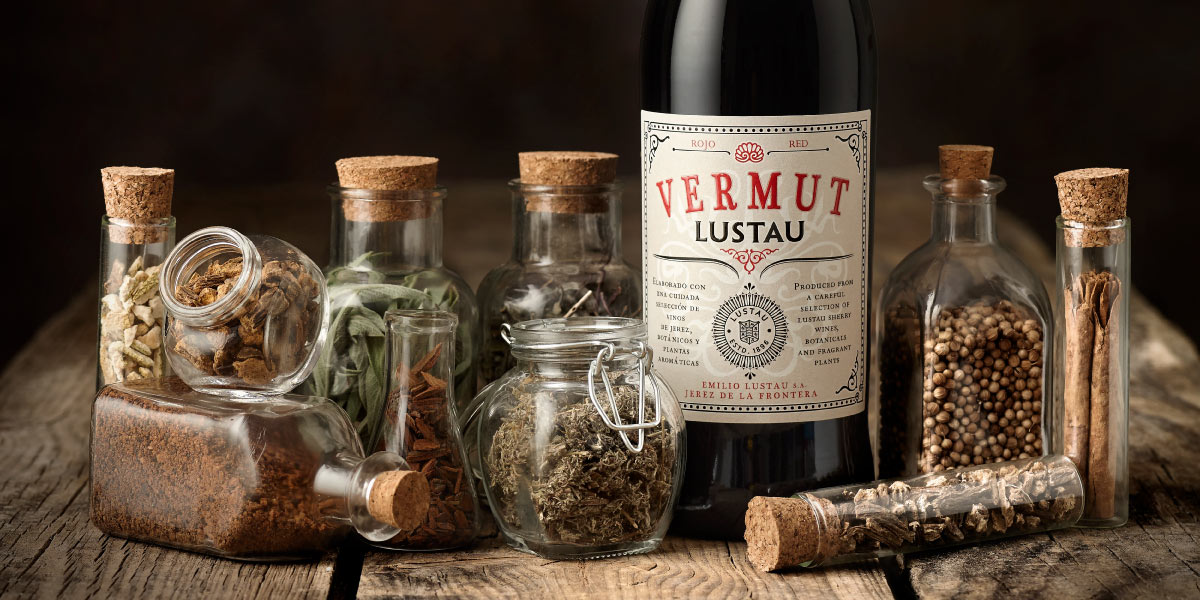
WHEN AND WHERE IS VERMOUTH CREATED? HISTORY AND ORIGIN OF VERMOUTH
Vermouth, like many other alcoholic beverages, has its origins in ancient Europe, particularly in Classic Greece. However, it wasn’t initially created for enjoyment but as medicine. In Greece, doctors often mixed wine with medicinal herbs to create restorative tonics with analgesic and anti-inflammatory properties. Hippocrates was the prominent figure in this practice and is traditionally believed to be one of the first to mix wine with wormwood and dittany leaves, resulting in what was called “Hippocratic wine.”

Despite vermouth’s strong connection to Mediterranean countries, it has also been quite popular in Northern Europe. For instance, in 1570, Giovanantonio Soderini wrote that vermouth had German and Hungarian origins, referring to an aromatic beverage made in the Balkans called “Polí.” The name “vermouth” itself dates back to the 18th century when these aromatized wines began to be known by this name, derived from the German “wermut.” This historical journey illustrates the widespread appeal and influence of vermouth beyond its Mediterranean roots.
To understand vermouth as a beverage for enjoyment, we need to journey further into the 19th century, arriving in Turin. Antonio Benedetto Carpano, residing in the city of Turin, received a recipe of Bavarian origin called “wermut wein,” made with a base of wine and a blend of herbs from the Alps. After many tests and blends, he managed to create a recipe that became very popular among artists and the wealthiest people of the city. This marked the birth of the aperitif wine, transforming vermouth into a beloved drink for pleasure and social enjoyment.
From this point forward, vermouth transcended not only the borders of Turin but also Italy’s. In 1821, Chambery vermouth emerged thank to various producers of this region. They created a white and drier vermouth compared to the original one made in Turin. During the same era, the popularity of vermouth also reached Spain, with two main regions adopting this product and adapting it to their local and regional culture: Reus and Jerez. This expansion marked the globalization of vermouth, making it a beloved and culturally diverse drink.
HOW MANY TYPES OF VERMOUTH I CAN FIND
Today, numerous expressions of vermouth, can be found in different parts of the world, not only Europe. As a result, the variety of flavors, colors, aromas, and methods of production is vast and diverse.
Moreover, there are other beverages made with botanicals playing a key role, such as “quinas”. Each region has adapted recipes according to the availability of local wines, local preferences, and the presence of specific botanicals. The challenge of finding, discovering, and enjoying each of these diverse vermouths is truly, however offering however a delightful journey for connoisseurs and enthusiasts alike.
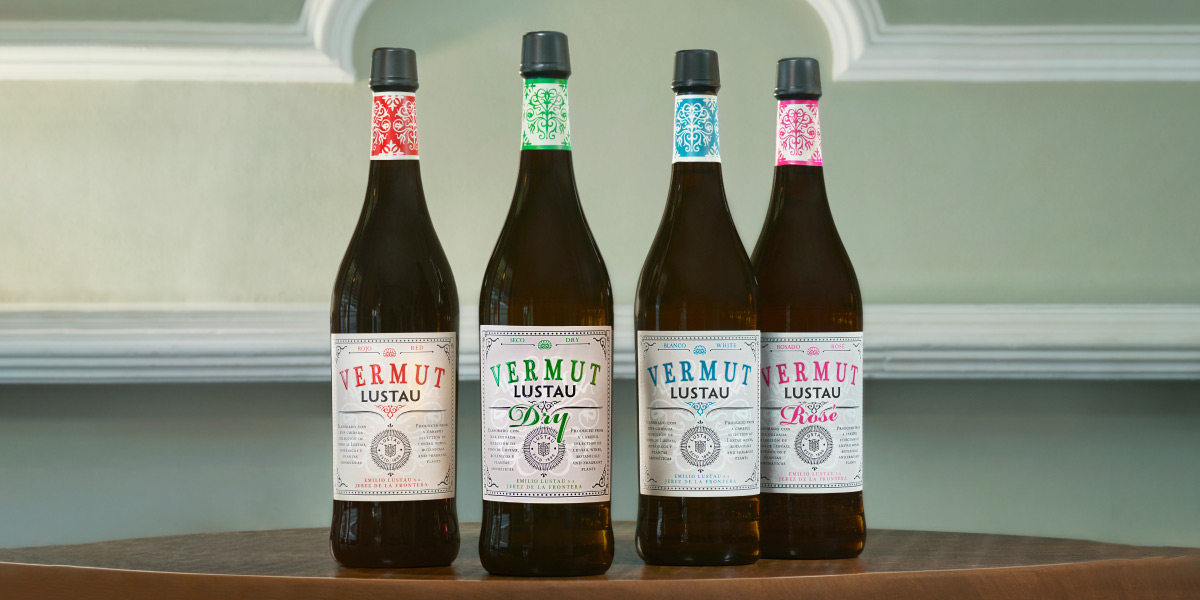
Vermouth can be classified in different groups. The following classification doesn’t cover all current styles of vermouth but they can be primarily identified as:
1. Red Vermouth (Vermut Rojo): This is the most popular and widely consumed style in Spain. It tends to be sweet and is made with white wine to which caramel color or other darker wines are added to give it its characteristic hue. It has a less bitter and dry palate compared to other types, with spices taking the spotlight in its profile. In red vermouth, you can find notes of vanilla, baking spices, fruit, and balsamic hints.
Vermut Rojo Lustau: Lustau Vermut Rojo is crafted with a perfect blend of two wines each aged individually in the traditional, authentic Jerez “Solera y Criaderas” System: An amontillado, dry and nutty, with character. A pedro ximénez, sweet, intense, and velvety.
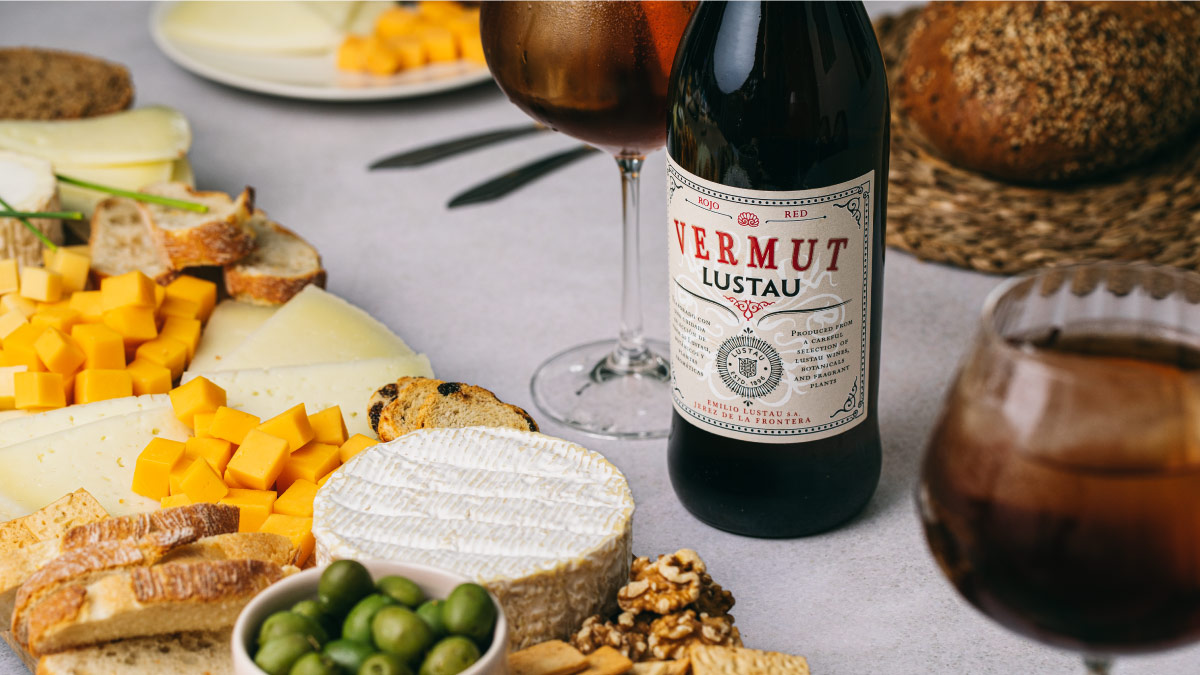
Thanks to the presence of the px wine, this genuine vermouth has sweet aromas of ripe fruit mingled with hints of citrus fruit. On the palate it is, its velvety and flavorsome, with a bitter finish and a delicate, distinctive nutty aftertaste.
2. White Vermouth (Vermut Blanco): Originating from France, this type of vermouth tends to be equally sweet, although it may also exhibit a more herbaceous profile and subtle spiciness.
Vermut Blanco Lustau: Lustau white vermouth is crafted by blending two wines: a dry, mineral and crisp fino sherry and a sweet and floral moscatel wine that impact the entire personality of this vermouth.
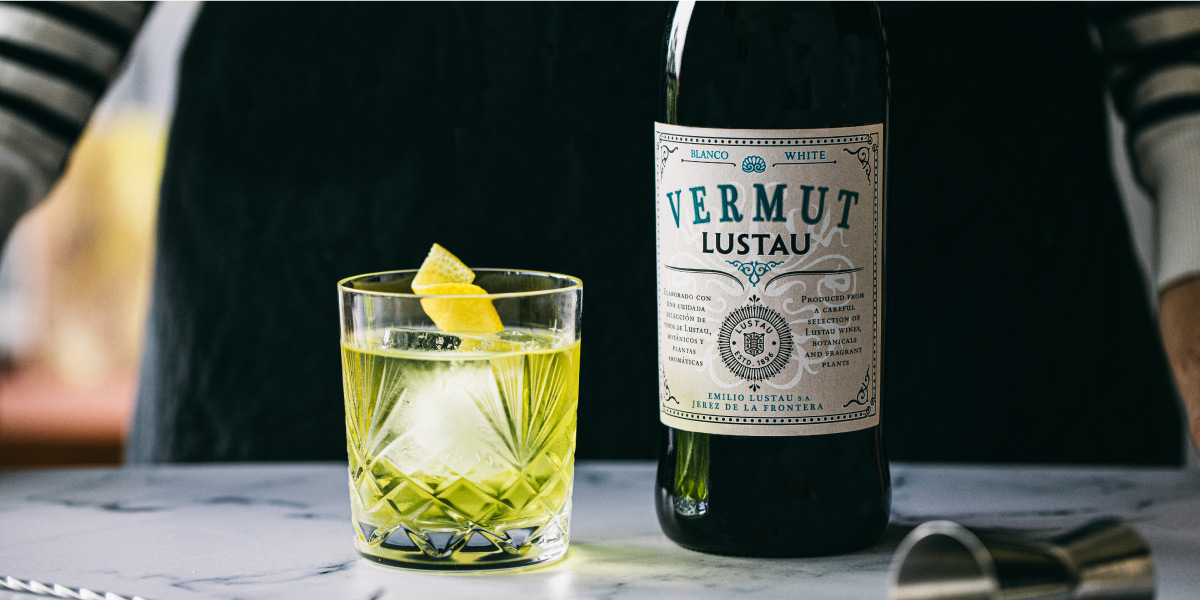
This vermouth has an intense and bright yellow color, showing floral, citrusy and herbaceous notes on the nose. The finish is bitter and clean with a long, nutty and refreshing aftertaste.
3. Dry Vermouth (Vermut Seco): Dry vermouth, also of French origin, is quite similar to white vermouth in terms of botanical presence, typically herbs, roots, and flowers. Due to its drier and astringent profile, it is mainly used in classic cocktails.

Lustau Vermut Dry: Vermut Lustau Dry is crafted with a delicate yet complex, dry and salty manzanilla, aged in Sanlúcar de Barrameda, a fishing town on the estuary of the Guadalquivir river.
4. Rose Vermouth (Vermut Rosado): This is an alternative and recent variety of vermouth. Its popularity is relatively recent, becoming increasingly known and appreciated for being a fresh vermouth that combines the spiciness of red vermouth with the herbaceous characteristics of white or dry vermouth.
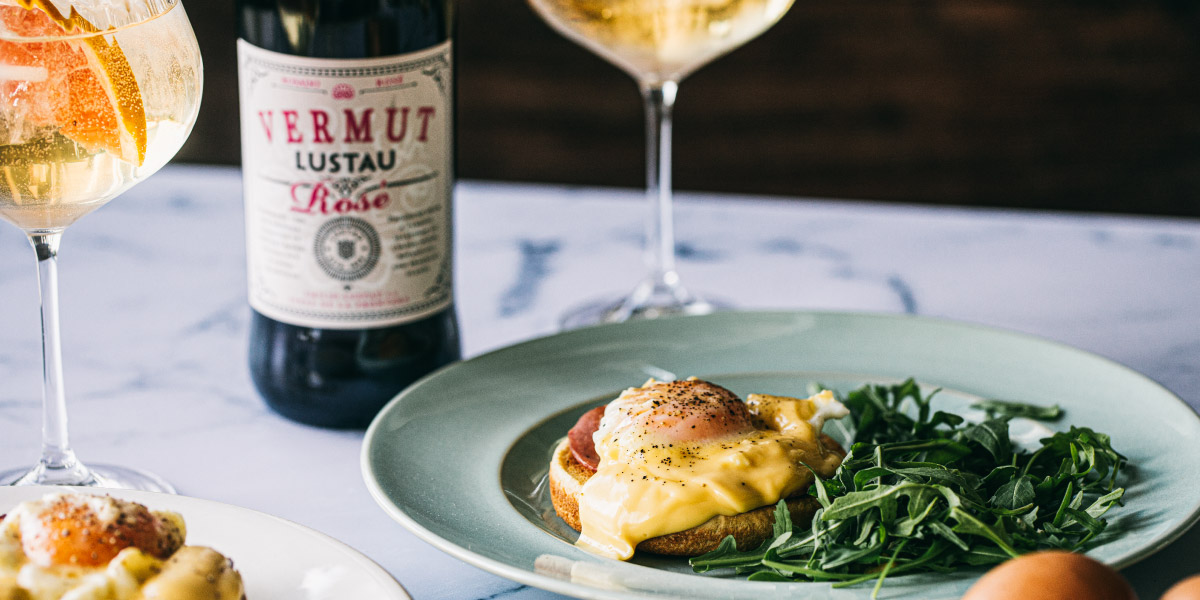
Lustau Vermut Rosé was crafted looking for a perfect blend of three wines: a dry and crisp fino sherry, a floral and sweet moscatel and a lively and fruity tintilla de Rota red wine.
This vermouth showcases an attractive and delicate pink-orange color. It is floral and herbaceous, highlighting lively fruity and spicy scents to the nose. On the palate, the spiced and herbaceous notes are followed by a comforting sweetness that leaves a delicious silky sensation.
WHAT IS THE ROLE OF THE BOTANICALS IN VERMOUTH
Botanicals, including plants, herbs, spices, flowers, roots, or fruits, among others, provide the characteristic flavor and aroma of vermouth. Despite the multitude of recipes and vermouth types, the aroma is often unmistakable thanks to the botanicals of the recipe. Ingredients like wormwood and gentian are responsible for contributing to the authentic aroma and flavor of any vermouth. Understanding and mastering the precise contribution of each botanical will result in a balanced vermouth where each botanical plays a role in achieving a harmonious aroma and flavor.
• Flavor Profile: botanicals are responsible for the complex and unique flavors of vermouth. Ingredients like wormwood, gentian, cinchona, and various herbs and spices provide bitter, sweet, and herbal notes, creating the signature taste of vermouth.
• Aroma profile: the aromatic botanicals used in vermouth production, such as thyme, marjoram, and citrus peels, contribute to its enticing scent. The combination of botanical aromas is what makes vermouth so fragrant.
• The extraction method: This process involves macerating or distilling botanicals to extract their essential oils and flavors. These concentrated botanical essences are then carefully blended to achieve the desired taste and aroma in vermouth. The choice of extraction method and the duration of maceration play a significant role in determining the final product’s character.
At Lustau, in order to achieve the optimum extraction of the botanical’s essence, each one is macerated separately. Afterwards, these essences and aromas are incorporated into the wine and the blend is left to repose. For 6 months the blend gains in consistency allowing both the botanical’s and the wine’s aromas to integrate perfectly.
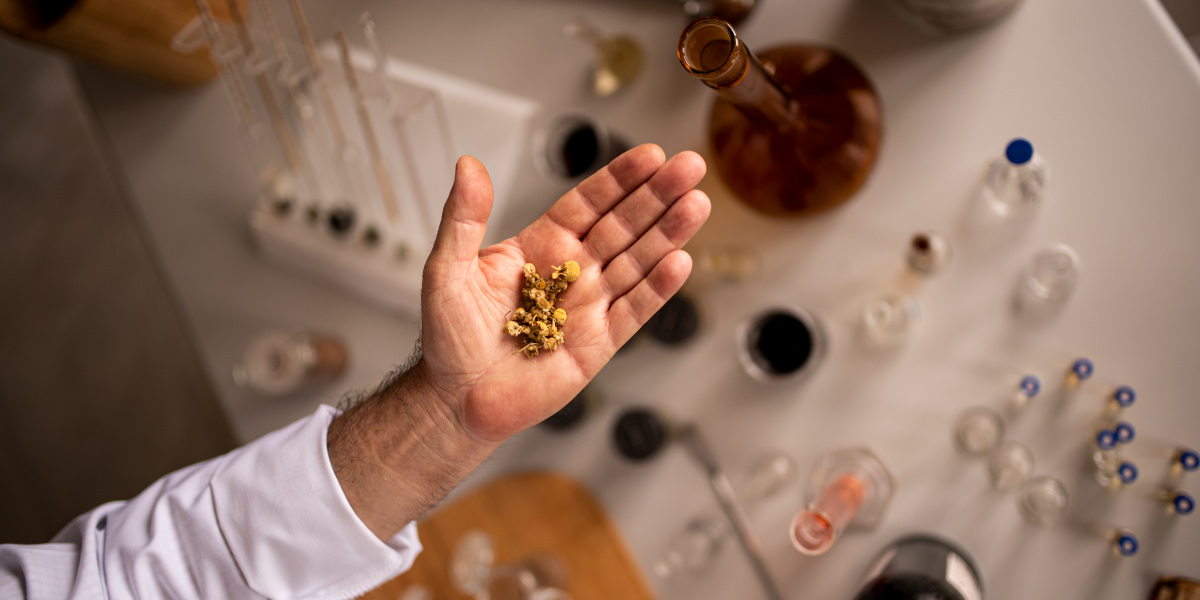
BOTANICALS IN LUSTAU VERMUT COLLECTION
Learn here the main botanicals selected that shape the final character of the Lustau Vermut Collection.
Vermut Rojo
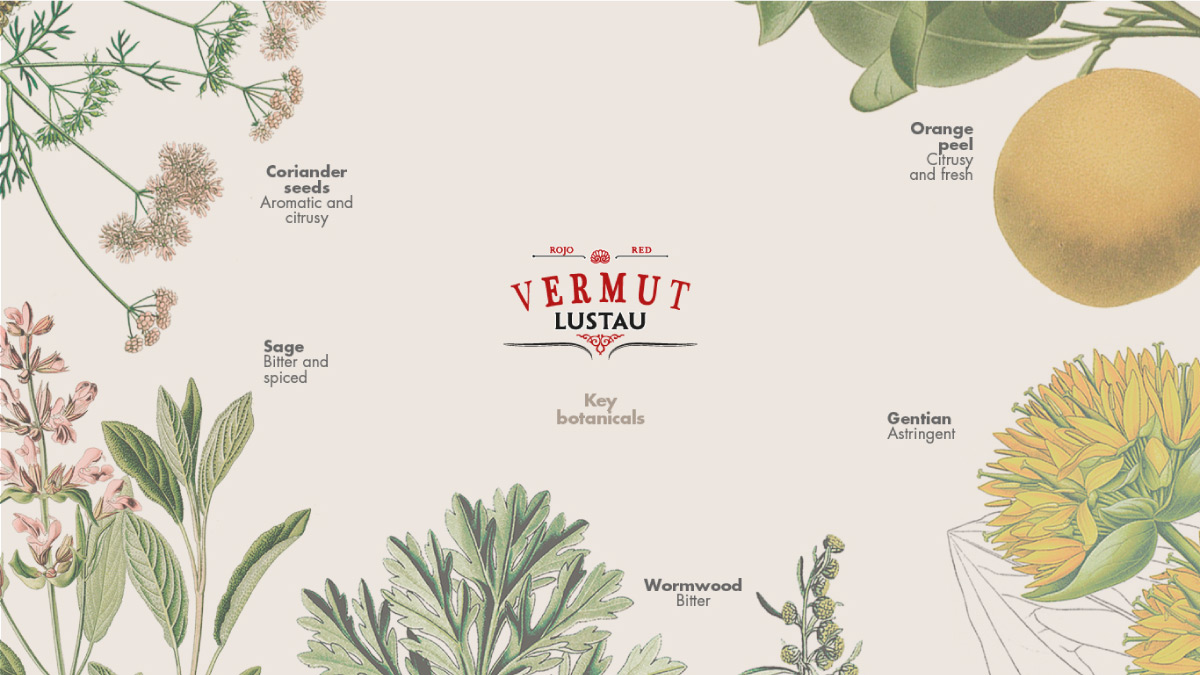
Vermut Blanco
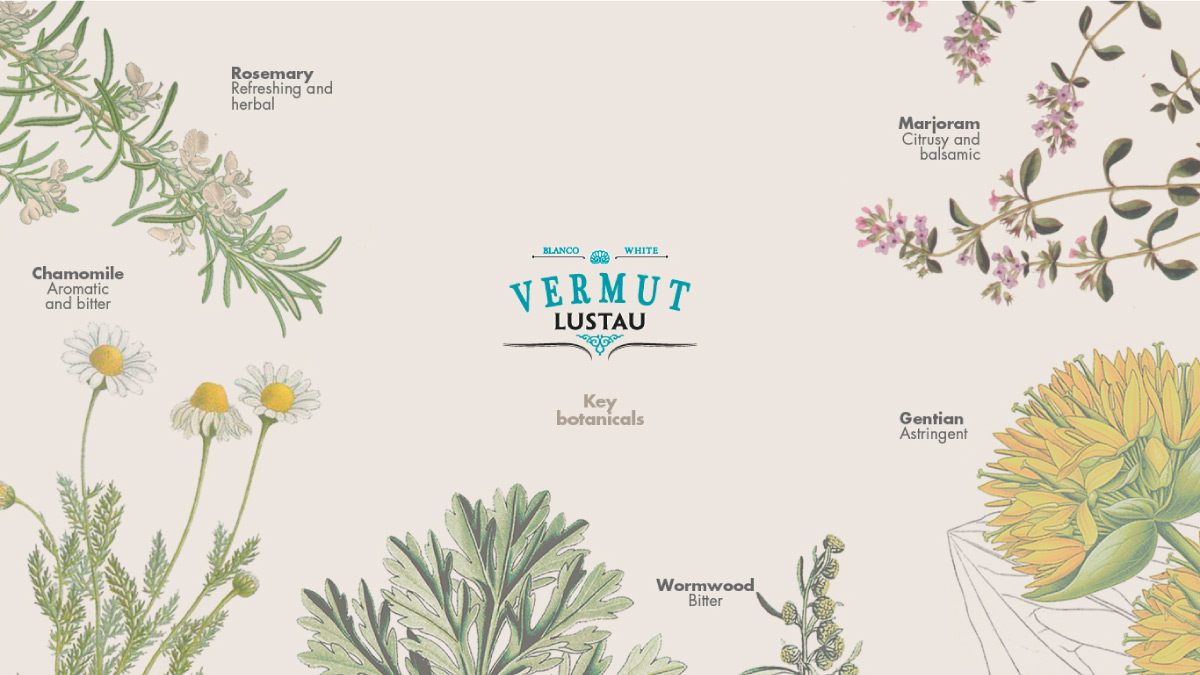
Vermut Dry
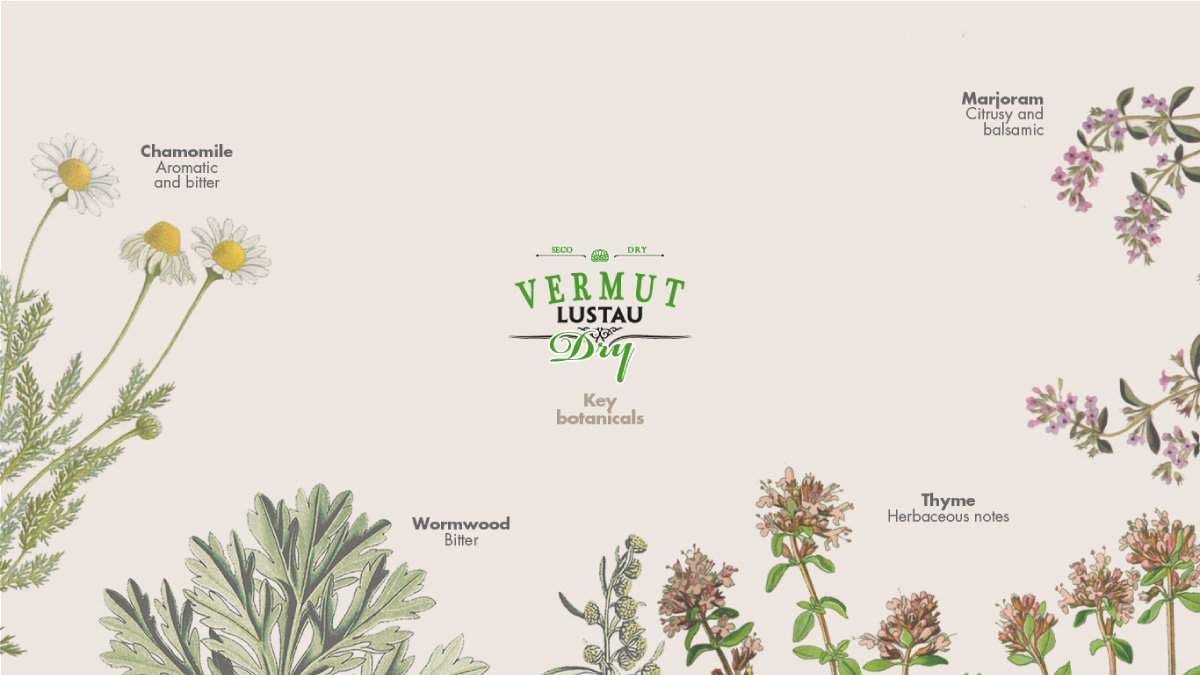
Vermut Rosé

HOW VERMOUTH IS ENJOYED?
Enjoying vermouth is a delightful experience. It is used more than ever in many cocktail bars around the world. However, high quality vermouth is much more than a cocktail ingredient. Discover below different ways to enjoy vermouth.
• Sip it neat or on the rocks: Some high-quality vermouths such as Lustau Vermut can be enjoyed on their own. Pour some vermouth into a rock glass over ice with a twist of citrus fruit or green olive for a simple but elegant way to enjoy vermut. This is the most common way to drink vermouth in Spain and it is part of the aperitif hour (or in Spain, “la hora del vermut”) that calls for a glass of vermouth on the rocks served before lunch or dinner.
• Classic Cocktails: is a key ingredient in classic cocktails like the Martini, Negroni, and Manhattan. Vermouth is experiencing a revival in the cocktail world, being included together with other fortified wines such as sherry wines in many modern recipes too. If you want a sherry-based cocktail, try any of these recipes.
• Vermouth and Tonic: Mix vermouth with tonic water for a refreshing, low ABV option. Lovely if you are looking for something light, refreshing but complex and very aromatic.
• Food Pairing: food and vermouth are strongly connected in Spain thanks to “la hora del vermut”. Red vermouths have been traditionally paired with nuts, olives, cheeses, high quality tinned fish or pickles. However, vermouth allows for a wider range of accompanying delicious meals. The best part of this is that just a simple bite can also perfectly work. Check the pairing below for a solid proof to vermouth’s versatility:
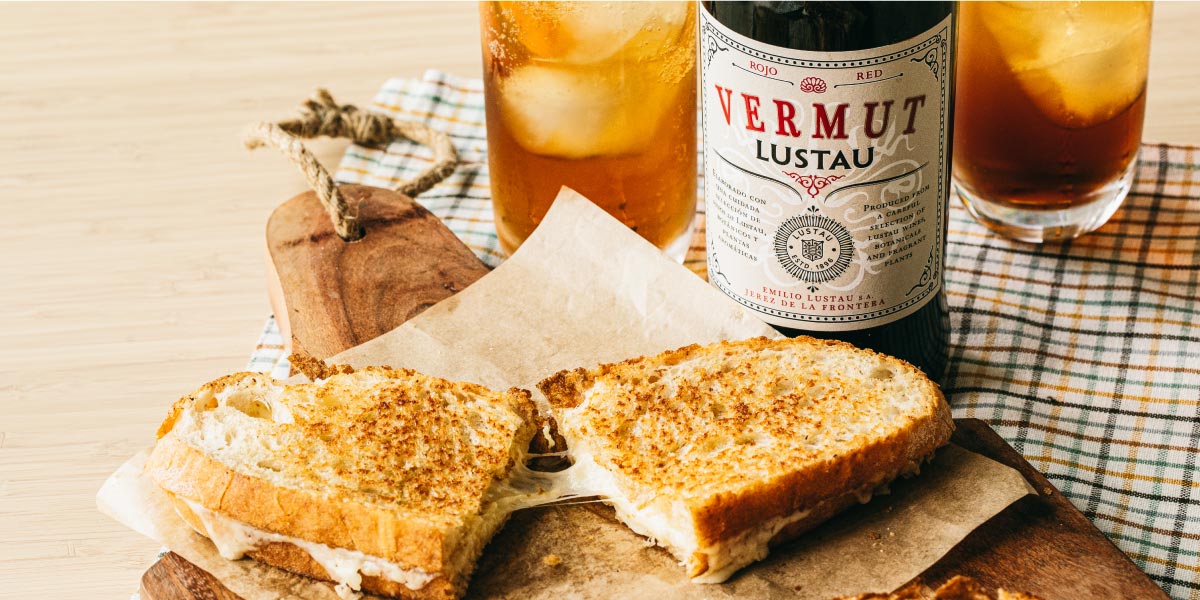
A NEW EXPRESSION FOR LUSTAU VERMUT COLLECTION
Lustau Vermut Dry joins the range of inimitable vermouths that the brand initiated 8 years ago, when introducing its Lustau Vermut Rojo, the first modern day vermouth made with sherry wine. The range is completed with the launch of the new Lustau Vermut Dry.
Vermut Lustau Dry is crafted with a delicate yet complex, dry and salty manzanilla, aged in Sanlúcar de Barrameda, a fishing town on the estuary of the Guadalquivir river. This manzanilla is laced with sea breeze scents and pleasant chamomile and “flor” aromas. This manzanilla provides a funky personality to this vermouth: briny with yeasty and nutty notes. It goes beyond the average dry vermouth category. Crafting and botanical maceration provide differentiation and uniqueness resulting in an easy to mix product yet also endowing a genuine and complex personality to any cocktail that contains gin, vodka, tequila or mezcal.
5 COCKTAILS TO PAIR WITH DRY VERMOUTH
Some of the best mixologists and bartenders in the United States have been involved in the development of this very special vermouth, considering its great interest to the world of mixology. Also, Spanish mixologists have been providing valuable insights to validate its excellence to the classy and staggering world of Martini styles and classic cocktails.
This vermouth is the perfect choice, its standout over the average, because of the aromas, flavor and texture nuances. It will make any cocktail catch your eye, nose and mouth. Try one (or all) of the recipes below to discover why this new vermouth will stir up the world of craft and classic cocktails. Brine every cocktail from now on with Lustau Vermut Dry!
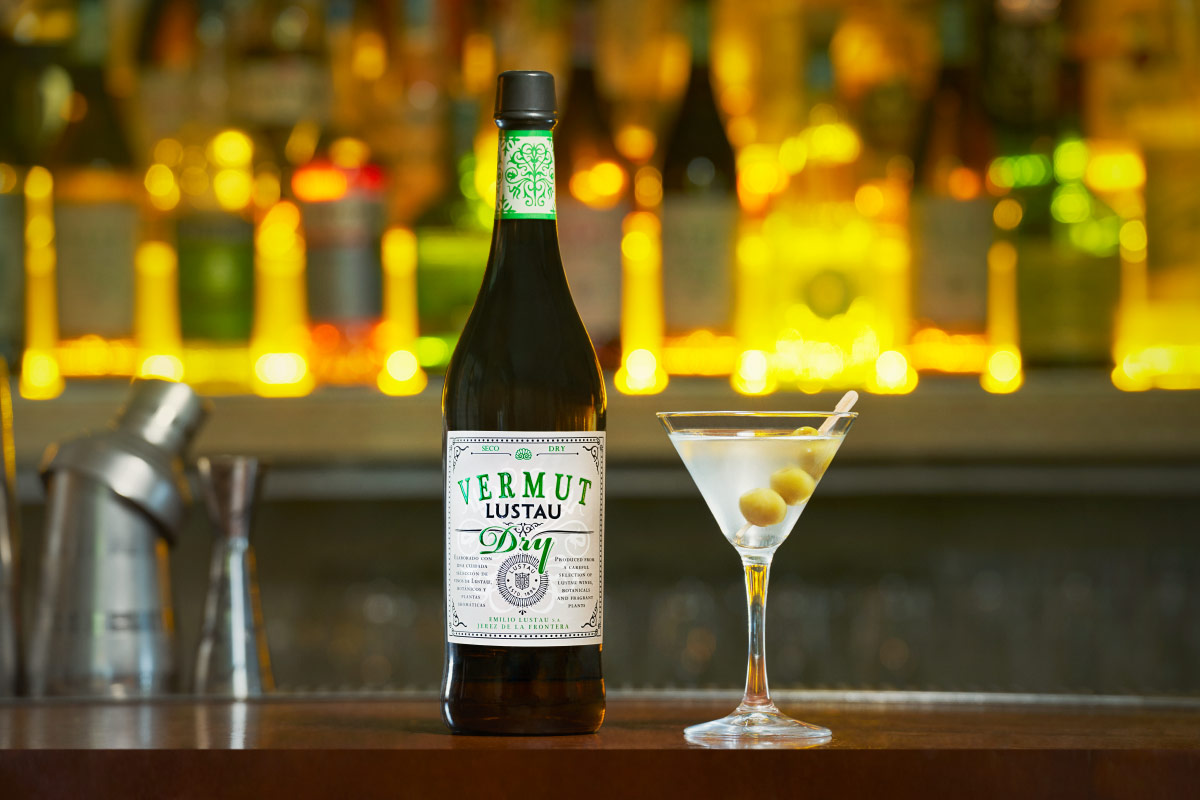
Not So Dirty Martini
Ingredients:
• 1oz Lustau Vermut Dry
• 2 oz London Dry Gin
• 3 Green Olives
Steps:
1. In mixing glass or cocktail shaker filled with ice, combine gin and vermouth.
2. Stir well, about 30 seconds, then strain into a Nick & Nora glass.
3. Garnish with three olives skewer.

Bamboo
Ingredients:
• 1.5 oz Lustau Vermut Dry
• 1.5 oz Lustau Manzanilla Papirusa
• 1 dash Orange Bitters
Steps:
1. Add the dry sherry, dry vermouth, Angostura bitters and orange bitters into a mixing glass with cracked ice and stir until well-chilled.
2. Strain into a Nick & Nora glass, and garnish with a lemon peel.
Elevate this recipe to a super briny, fresh and umami experience with this En Rama Bamboo.
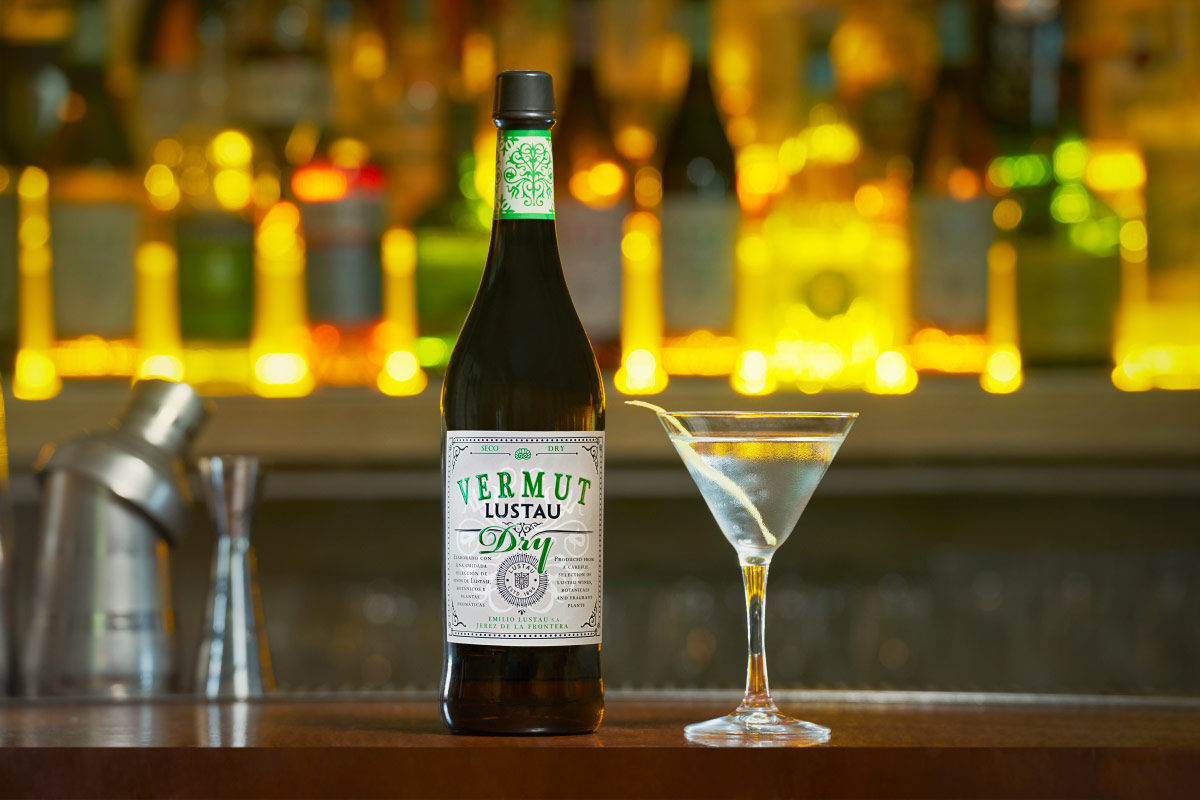
Reverse Martini
Ingredients:
• 2 oz Lustau Vermut Dry
• 1 oz London Dry Gin
• 1 dash Orange Bitters
• Lemon Peel
Steps:
1. In mixing glass or cocktail shaker filled with ice, combine vermouth and gin.
2. Stir well, about 30 seconds, then strain into a glass.
3. Garnish with a lemon peel or twist.
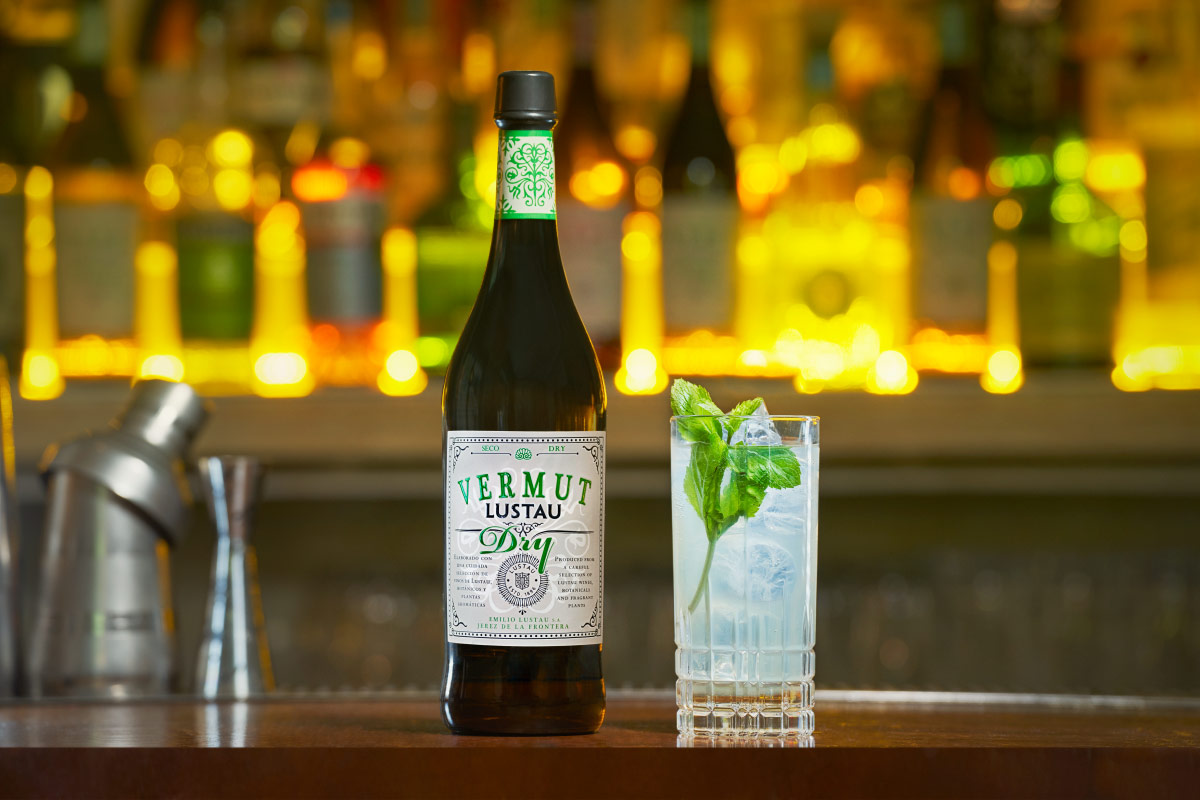
Albarizas (a riff of the original Fermin Blas’ Albarizas)
Ingredients:
• 2.5 oz Lustau Vermut Dry
• 1 oz Elderflower liqueur
• Top Ginger beer
• Mint sprig
Steps:
1. Pour the vermouth and elderflower liqueur in a short highball glass with a big ice piece.
2. Top with 2 to 2 1/2 oz ginger beer and garnish with a fresh mint sprig.
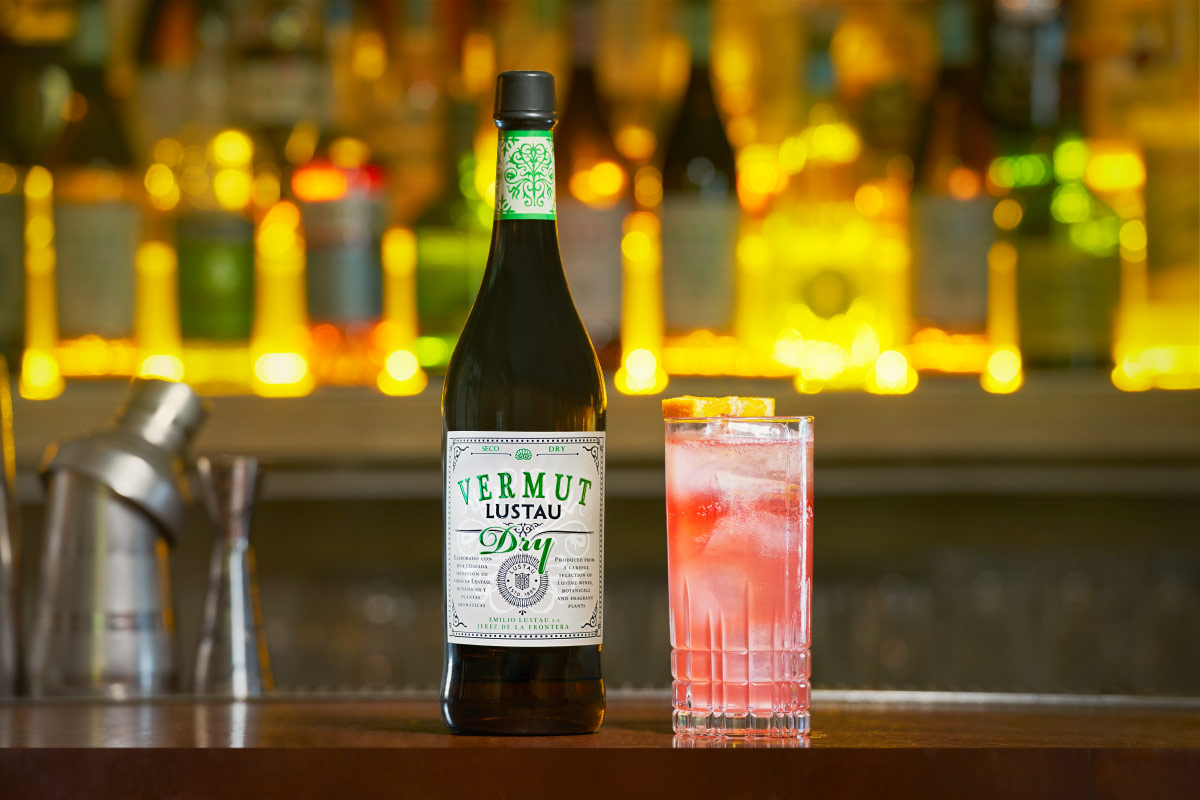
Rome with a View (Michael McIlroy, NY)
Ingredients:
• 1 oz Lustau Vermut Dry
• 1 oz Campari
• 1 oz Lime Juice
• .5 oz Simple Sugar
• Top Soda
Steps:
1. Add Campari, dry vermouth, lime juice and simple syrup to a cocktail shaker.
2. Add ice and shake until chilled.
3. Strain over ice into a Collins glass.
4. Top with soda water and garnish with an orange wheel.







